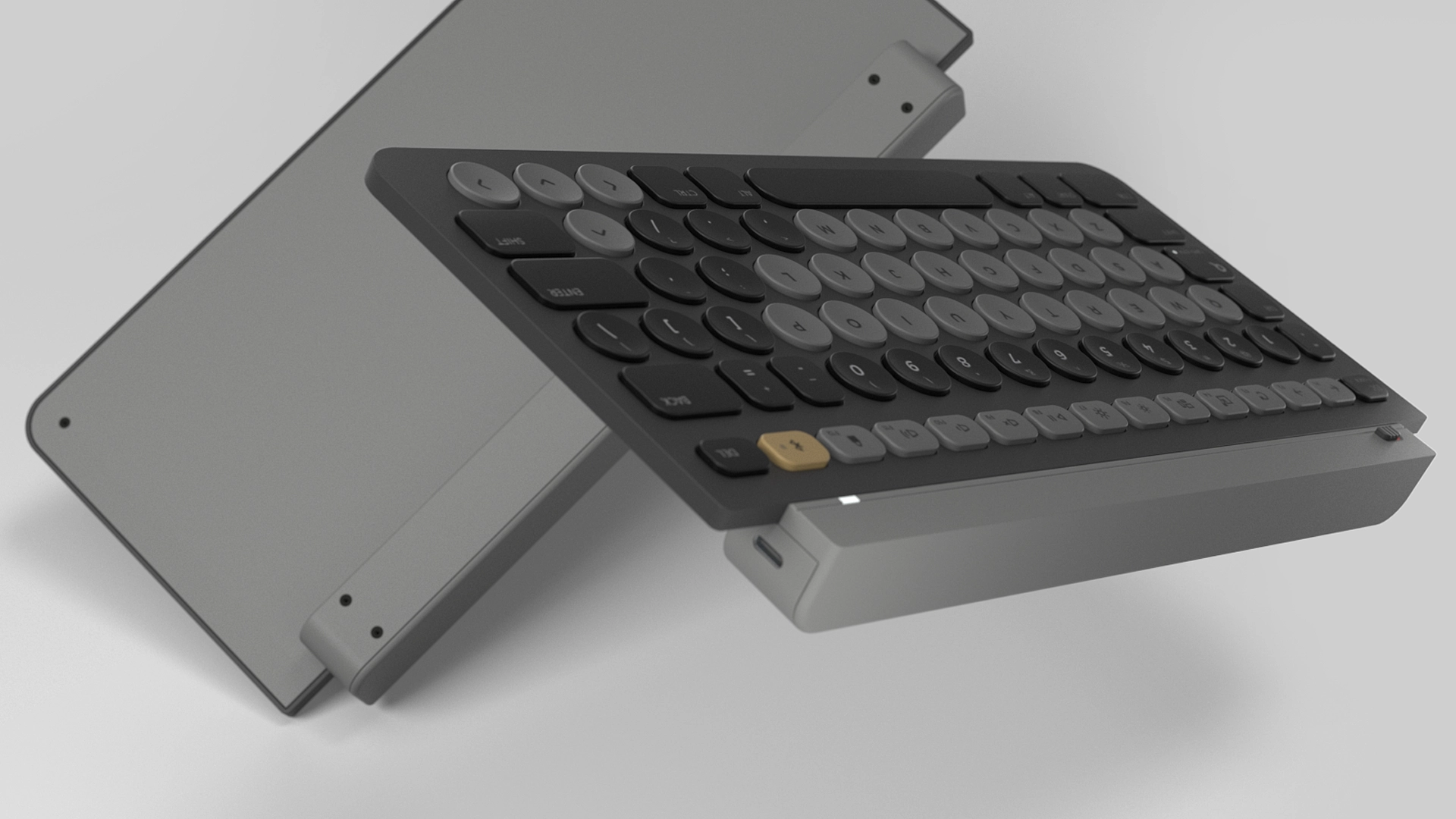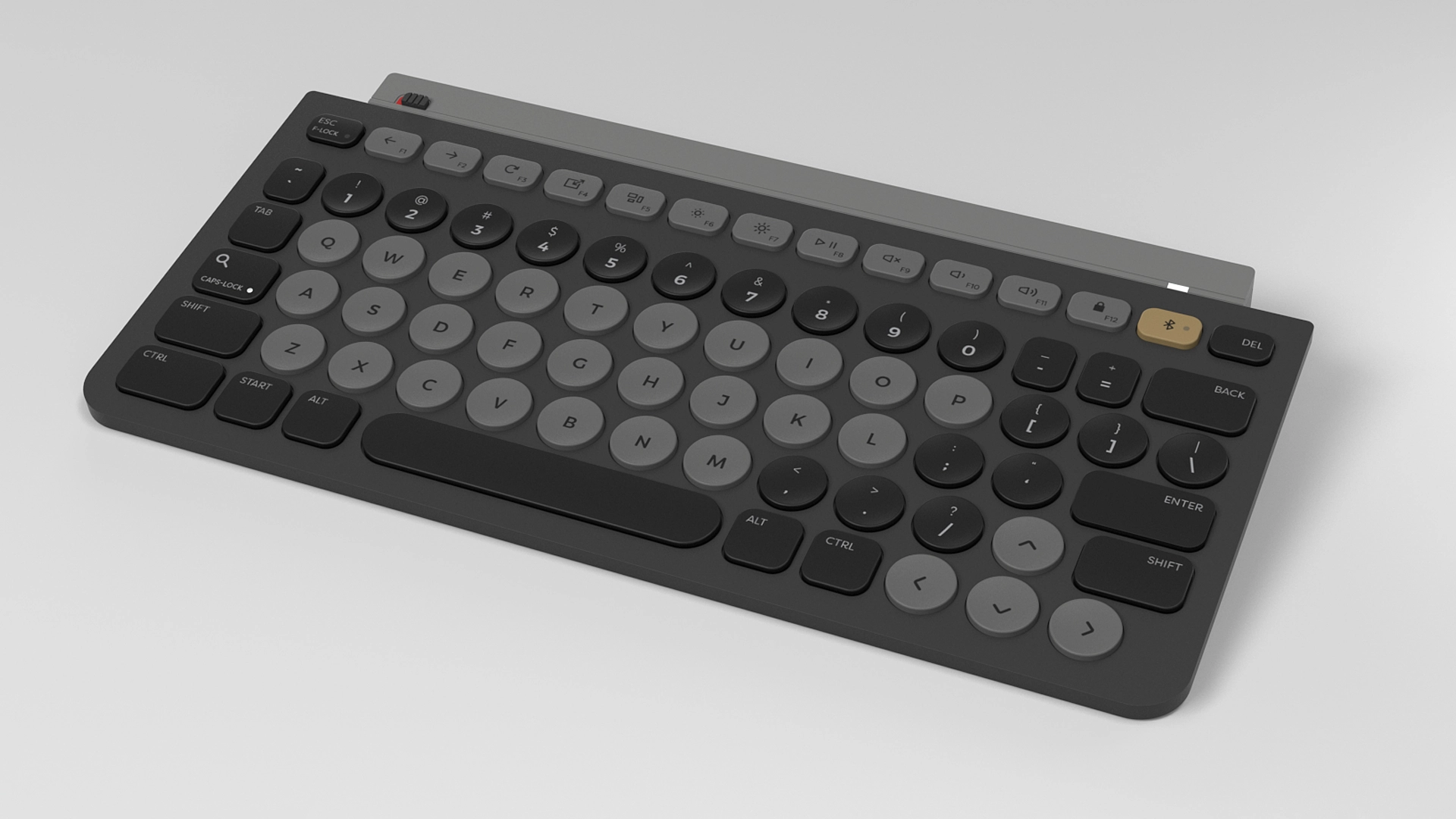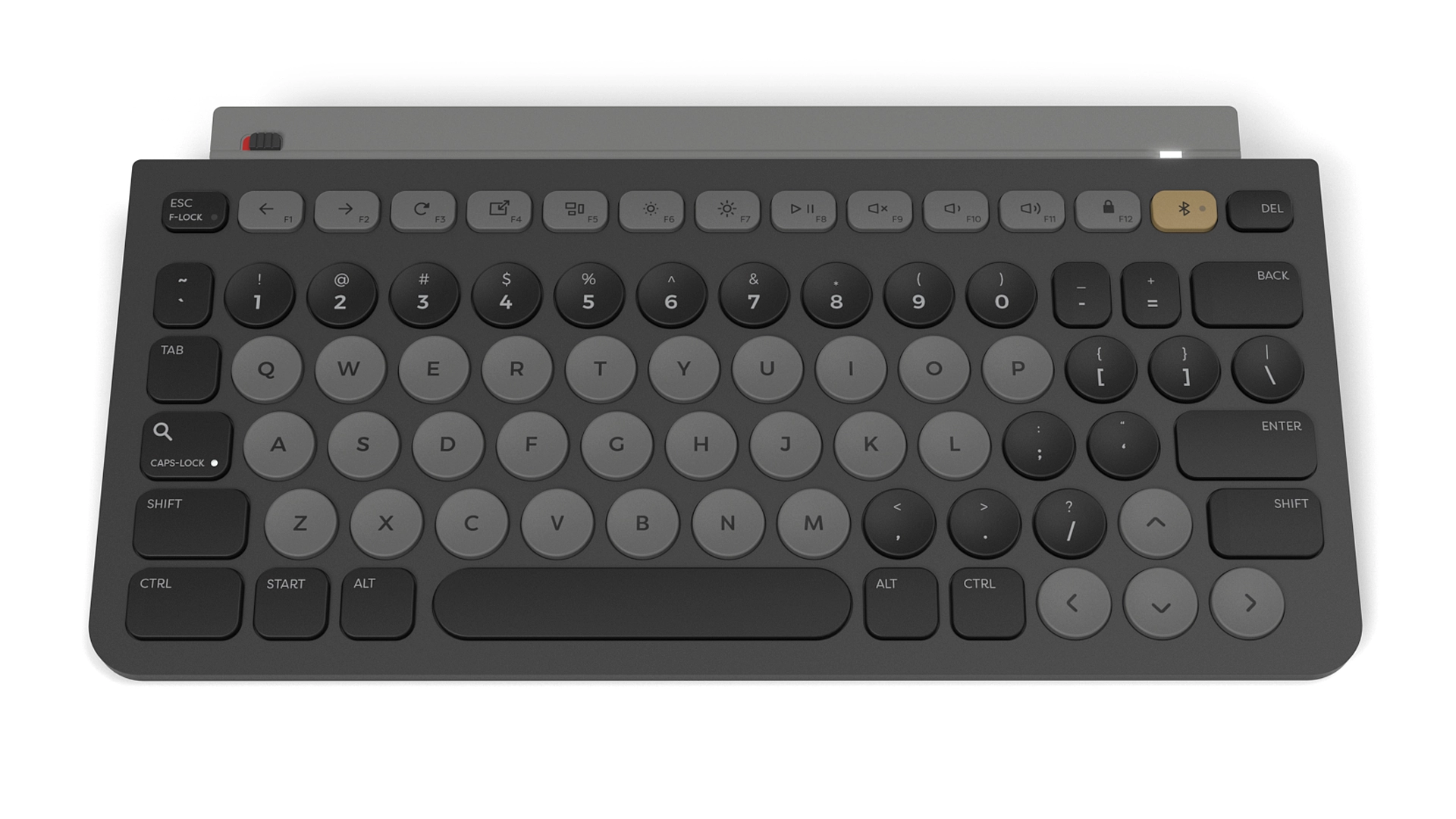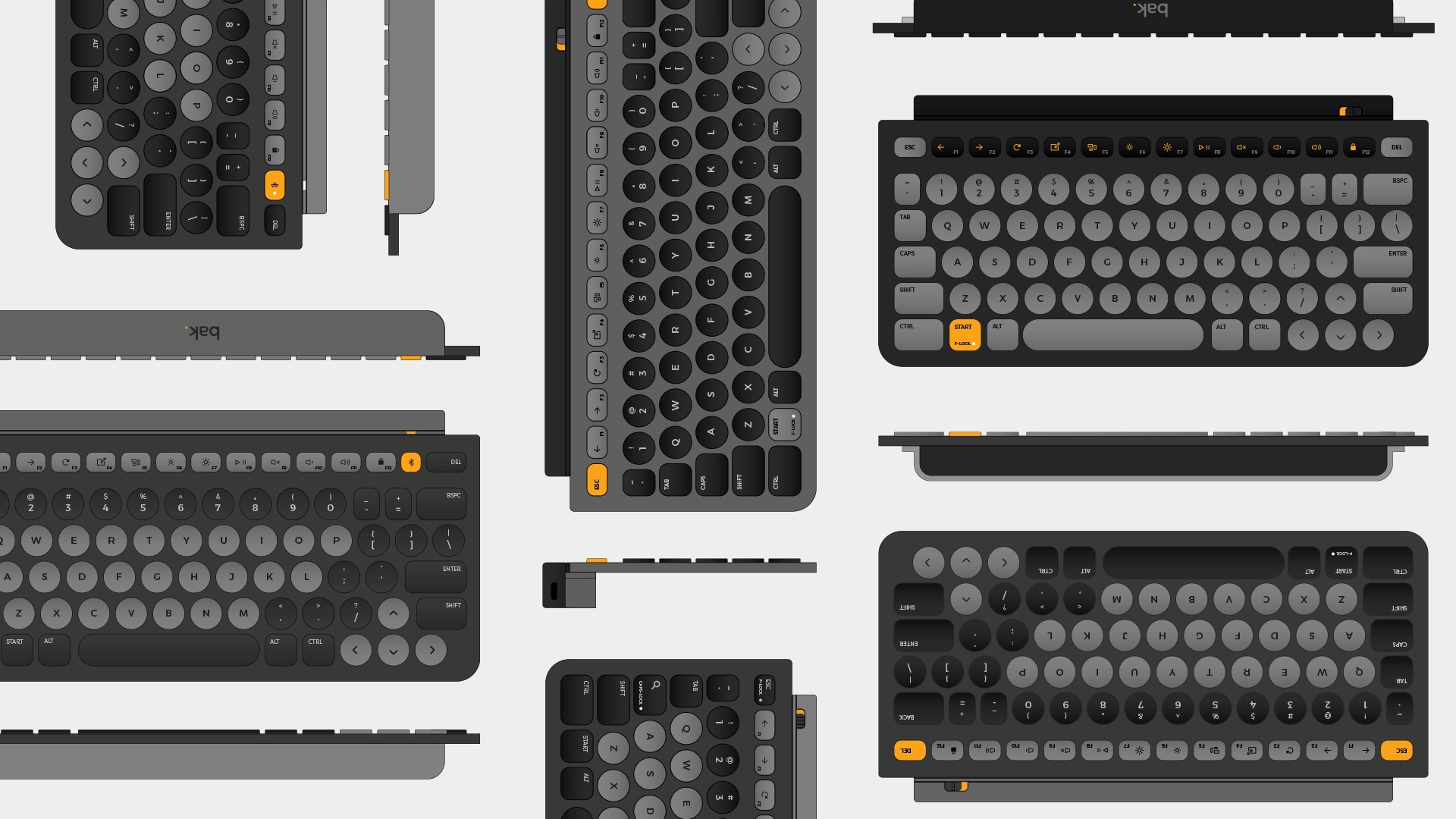
Bak USA, a Buffalo-based computer manufacturer, was developing a suite of ruggedized products aimed at construction managers and in-field workers.
Our goal was to create a durable, outdoor-ready, wireless keyboard. Our customer split their time between their office and on-site. The keyboard needed to reflect that versatility. It should feel at home on your desk, travel well, and remain functional in the field.

We aimed to re-envision what durability looks like. This device should look smart on your desk, but not too prissy in the field. Instead of hammering down extra-beefy ridges everywhere we wanted something more refined. I drew inspiration from outdoor items and also the original Nintendo Entertainment System. A lot of products in the 80’s had sharp ridges that felt purposeful. The final direction combined these precise lines and hard edges with soft playful round shapes and circles. Varying between these conflicting elements helped balance the professional but durable intention. Combined with the warm, dark color pallet; it looks appropriate in every environment it’s used in.

Behind the Scenes:
There are a few unusual design elements here beyond the mix of round and square keys. Notice the non-uniform key shapes and colors which create zones of data entry. The arrow keys were part of this story. Often the Up and Down keys are not given a full key height. This is a nightmare if you wear gloves. The solution was a workable trade-off: we stole space from the right shift key which is a duplicate function key. Highlighting the arrow keys in a different color brought visibility to this non-conventional approach.

I had the first Apple Magic Keyboard from the mid-2000s. The entire battery assembly was in a cylinder at the back of the keyboard. The rest of the keyboard was slim and fit perfectly in my backpack nestled against novels, laptops, or sketchbooks. This approach to the internals made the most sense for portability.
Bak USA’s firm philosophy on the right-to-repair guided the decision to expose the assembly screws. It also furthered the no-fuss attitude.
Everything should be accessible at first glance. I’ve had several keyboards where the power button is on the side. No one wants to pick up and flip the device around to check if it is ON or OFF. So we kept all inputs on the top of the keyboard.